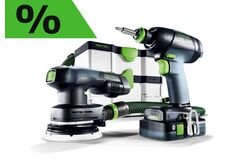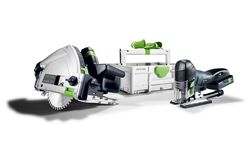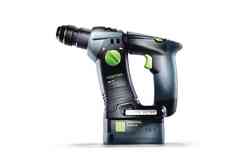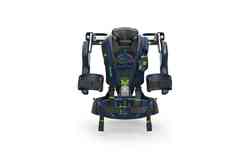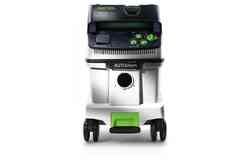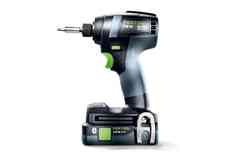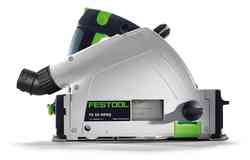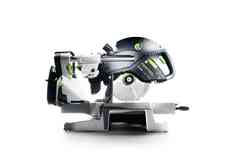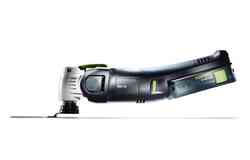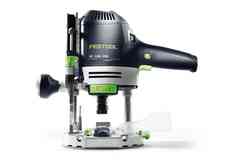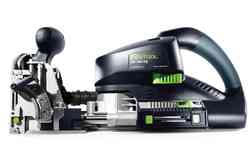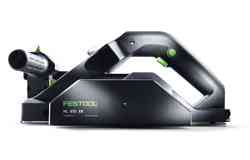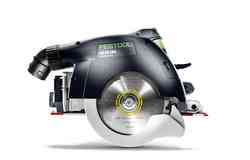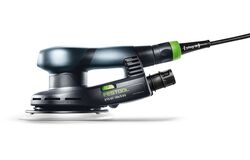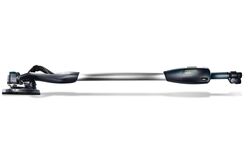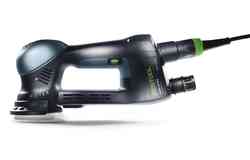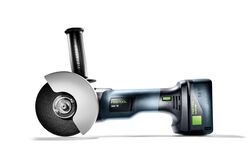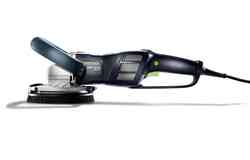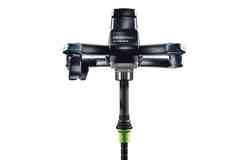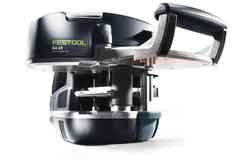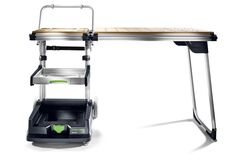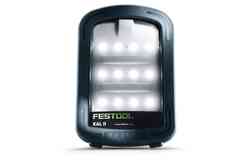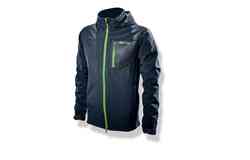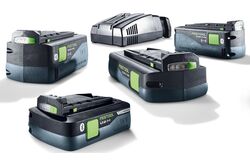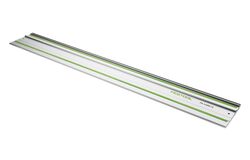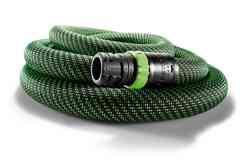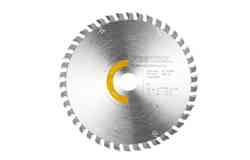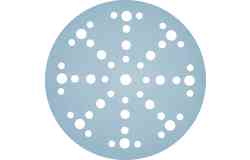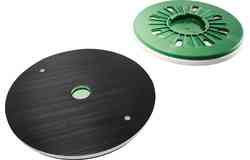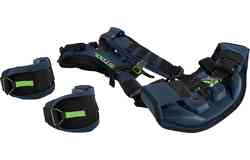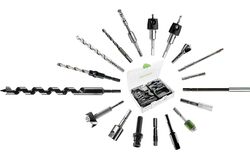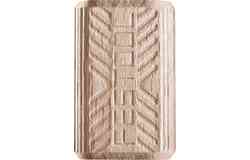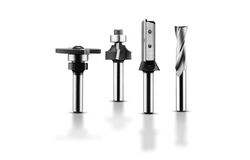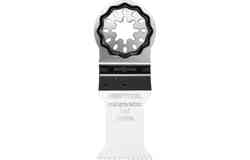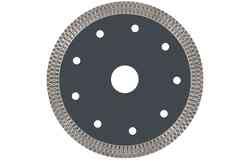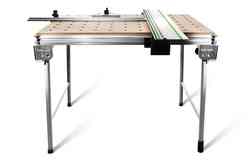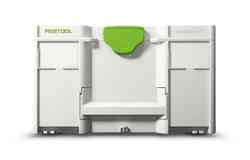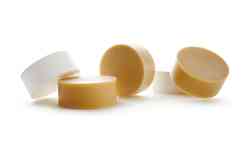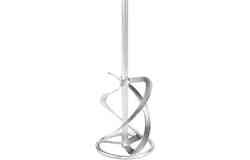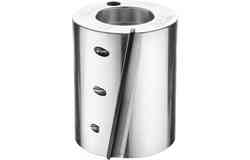
Profile elements for LED light bands – professionally installed
Note: In the download area the text is available including assigned and labeled picture material.
Please note that there are different country versions of this press release available BG | CZ | DE | DK | EE | EN | ES | FI | FR | HU | IT | LT | LV | NL | PL | RO | SE
Find them in the media set to download.
What can you do for unusual jobs for industry customers? How do you professionally fix extra-long light bands to the ceiling and wall? What should you be aware of? Painter Stelzle gives tips on how to install these extra-long LED light bands professionally.
In addition to private customers, painter Noah Stelzle also works for industry customers with particular requests that you don't see every day, which are often very special for him and his team. Jobs like this with special requirements sometimes present the team with a challenge, and can also subsequently develop into a trend. This is why Noah Stelzle is looking very closely at this special processing method, searching for an optimal, professional solution by seeking advice from master painter and application engineer Philipp Stahl and trainer Georg von dem Bussche from Festool.
A brief introduction to the project itself
Industry customer Harro Höfliger manufactures production and packaging machines at various sites in Baden-Württemberg, Germany. At the head office in Allmersbach im Tal, the ground floor of an existing building is being converted into a new customer centre. Plans are in place and the Stelzle painting business is tasked with bringing them to life. (Fig. 1) (Fig. 2) LED light bands on the ceiling and wall have been requested. The Stelzle painting business has routed the groove for the profile strips on the wall using a router and guide rail. Now for the ceiling – that's where it gets tricky: As you can see from the pictures, the LED light bands are intended to provide an indirect source of light – with a length of up to 13 metres around the staircase.
Step by step towards the perfect solution
Noah Stelzle (right) and his colleague Raphael Berg (left) mark all the relevant points directly on the ceiling, following the specified plan. (Fig. 3) To be absolutely sure that the line to be cut is straight in the long 13-metre stretch, Noah Stelzle aligns the lines on the ceiling using a cross line laser. (Fig. 4) To achieve the longest and most precise saw guide possible on the ceiling, trainer Georg von dem Bussche recommended that the Stelzle team join together three guide rails, each with two connection pieces (see Tip 1). This creates a total length of 5.70 metres. (Fig. 5) Before the extended, 5.7-metre guide rail is fixed to the wall, boss Noah Stelzle secures the adhesive pads (see Tip 2) to the extended FS guide rail and checks whether the pads are correctly positioned. (Fig. 6) Next comes a key moment: The long guide rail is to be fixed to the ceiling, a task that requires several pairs of hands and sure instincts. The team fixes the extra-long guide rail along the line of the cross line laser, initially with adhesive pads. Since the surface on the ceiling has not yet been primed, it is safer to secure the extra-long guide rail for the cut with screws. (Fig. 7) Stelzle colleague Muharrem Kuyucu firstly secures the guide rail to the sub-surface using the new adhesive pads. (Fig. 8) To ensure that the guide rail does not detach from the ceiling during the extra-long cut, Muharrem Kuyucu fixes it to the ceiling using screws, with the help of a cordless drill. (Fig. 9) Next comes another key moment: Raphael Berg makes the first cut using the TSC 55 KEB cordless plunge-cut saw and the Wood Universal circular saw blade (HW 160x1,8x20 W28) in a precise, straight line along the length of the laser line. (See Tip 3) (Fig. 10) The next step for the team is to detach the long guide rail from the screws and, thanks to the positioning aid created specially (see Tip 4), move it exactly for the second parallel cut, so that the profile element fits perfectly. (Fig. 11) Now it's time for the second line for the profile element. The Stelzle team works together to perform the second parallel cut precisely with the TSC 55 cordless plunge-cut saw. (Fig. 12) Noah Stelzle checks whether everything is detached between the two cuts on the ceiling, so that later the profile element for the LED light band can be optimally inserted. (Fig. 13) Several pairs of hands are needed again for this work step: The Stelzle team carefully removes the extra-long guide rail and puts it safely aside. (Fig. 14) To remove subtle parts in the corners, Muharrem Kuyucu uses the VECTURO OSC 18 cordless oscillator with USB 50/35/Bi/OSC universal saw blade. (See Tip 5). (Fig. 15) Finally, Raphael Berg uses the profile element to check whether everything has been correctly cut – and sees that everything is perfect. Next, the painters can coat the whole ceiling and install the profile strip for the LED light bands when it has dried. (Fig. 16)
The Stelzle team
From right to left: Boss Noah Stelzle is proud that he and his team (Muharrem Kuyucu, Raphael Berg, Moussa Joulo) can find the perfect solution for this unusual job. (Fig. 17) (Fig. 18) The job for Harro Höfliger has been completed by the Stelzle team and the lighting elements make their presence felt.

Tips
TIP 1 – From trainer Georg von dem Bussche
Guide rails are available in different sizes. All guide rails are quick and easy to combine with a guide rail connector. The connecting pieces are self-aligning. Trainer Georg von dem Bussche recommended that Stelzle painting business use the guide rails they have available: This means that three FS 1900 can be joined to form a total length of 5.70 metres. Perfect for long plunge cuts on the ceiling.
TIP 2 – From trainer Georg von dem Bussche
The adhesive pads are quick and easy to install in the guide rail cut-outs. Simply align the guide rail, press down the adhesive pads and you're ready to start work. The long cut-outs in the FS guide rail ensure that it is easy to carry. The adhesive pads can fix the extra-long guide rail tot he ceiling. In this case, trainer Georg von dem Bussche recommends using additional screws to fix the FS guide rail in place, since the ceiling had not yet been primed and the dusty sub-surface meant that secure retention could not be guaranteed.
TIP 3 – From application engineer Philipp Stahl
Philipp Stahl recommended the 4.0 Ah battery pack for the great deal of overhead work with the TSC 55 and replacing it when needed, making the TSC 55 somewhat lighter for the long and numerous overhead tasks. The application engineer recommended changing the saw blade to suit this application: In particular, the WOOD UNIVERSAL HW 160x1,8x20 W28 circular saw blade is ideal for this case.
TIP 4 – From application engineer Philipp Stahl
To be able to cut both lines for the profile strip on the ceiling exactly and precisely, the guide rail must be positioned on the cross line laser and be just as exact and parallel to the first line for the second cut. To do so, Philipp Stahl's recommendation for the Stelzle team was to create several positioning aids or templates before hand.
TIP 5 – From application engineer Philipp Stahl
To remove protrusions from the edges and corners for the profile strip cleanly, Philipp Stahl recommended the VECTURO OSC 18 oscillator with the USB 50/35/Bi/OSC universal saw blade. With a comprehensive range of accessories and consumables, painter Stelzle can adapt flexibly to the optimal execution for the special job.
Authors: Silvia Pirro – in cooperation with Philipp Stahl (master painter and application engineer at Festool)
For more information about this project by the Noah Stelzle painting business at the machine engineering company Harro Höfliger, see the Festool blog:
www.festool.co.uk/blog
Image source: Festool GmbH/Harro Höfliger GmbH/Maler Stelzle GmbH


